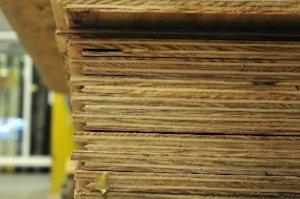BUYING A SOFA? CONSIDER THE FRAME
/You’ve probably never seen the frame on the inside of your sofa, but do you know what it’s made of? There are many considerations that go into deciding what to fabricate upholstered furniture out of, and just as many considerations for you when buying a new piece. Consult the following guide when shopping for upholstered furniture for your home to make sure you bring home a piece of furniture that is both safe for your family, and a durable investment of your money.
THE HISTORY OF HARDWOODS
For timber producers and wood-users, hardwood is expensive in time and money. When a tree is cut, the wood produced must be dried before it used; otherwise major warping and cracking occurs in your furniture. Even after it is dry, wood has a tendency to expand and contract with seasonal temperature and humidity changes, though this fluctuation lessens over time.
In the past, wood would have to rest for many years before it could be processed and crafted into something to avoid this sort of heavy warping in a piece of furniture. This potential for warping was also a big factor in design, and even now, hard-wood furniture must be designed with this behavior in mind. These days, drying is usually a process that happens in a kiln, rather than in storage over many years.
PLYWOOD AS A SOLUTION; A NEW PROBLEM ARISES
Plywood developed as the natural solution to this problem of warping-- plywood is made of sheets of wood, either sliced or lathed off of a trunk, and then glued together for strength. Each layer is glued with the grain at a 90-degree angle to increase tensile strength and limit the amount of movement that can happen in the wood as the humidity changes. This means that would can be cut and used almost immediately, with no long drying times required to stabilize the wood. It also means each tree cut is used more efficiently—flaws in the grain can be ignored when so many layers are being glued together.
The real problem with plywood is, almost all of the glues used in this process are formaldehyde-based. Formaldehyde is a known carcinogen, which leaches out of the wood and into the air over time, especially in new materials or high humidity. The EPA has named formaldehyde as a probable human carcinogen, and studies done of work-place exposure to formaldehyde found increased instances of leukemia in those exposed.
YOUR ALTERNATIVE CHOICES
If you’re trying to avoid formaldehyde in your furniture, the best step you can take is to go back to using hardwoods. This old-fashioned way is more time-intensive and more expensive, but you guarantee that the toxic gases that have been shown to be emitted by formaldehyde aren’t off-gassing into your home.
If you’re more serious about wood conservation, you do still have viable certified hardwood options. The lumber industry has a notorious history of clear-cutting and similar practices that can leave our wildernesses pillaged of resources and unlivable for local wildlife. However, some independent certifications are offered wood-producers who harvest selectively, allowing natural environments and animal habitats to thrive while still allowing for the harvest of this renewable resource.
Look to FSC certification as your gold standard; the Forest Stewardship Council seeks to promote environmentally appropriate, socially beneficial and economically viable management of the world’s forests. While other manufacturers use SFI-certified woods, frequent concerns over the involvement of lumber-industry officials in the certification process makes it a choice that comes with less peace of mind.
THE PROS OF BUYING HARDWOOD
Besides avoiding formaldehyde glues, there is one other huge advantage to owning a sofa with a hardwood frame, and that is durability. Part of the reason the dovetailed handcrafted antique pieces of the past have such value and beauty today is because they are made from hardwoods. Plywood becomes brittle over time as the glue off-gases and the boards age, but hardwoods find equilibrium, expanding and contracting less with each seasonal change.
Rather than buying a potentially toxic sofa with a short shelf life, consider investing in a sofa made with a certified hardwood frame, chosen for sustainability and peace of mind, and guaranteed to stand up to the test of time, rambunctious children, and grandchildren—without becoming brittle and creaking or breaking under the pressure.
To learn more, email us at contactus@ecobalanza.com



